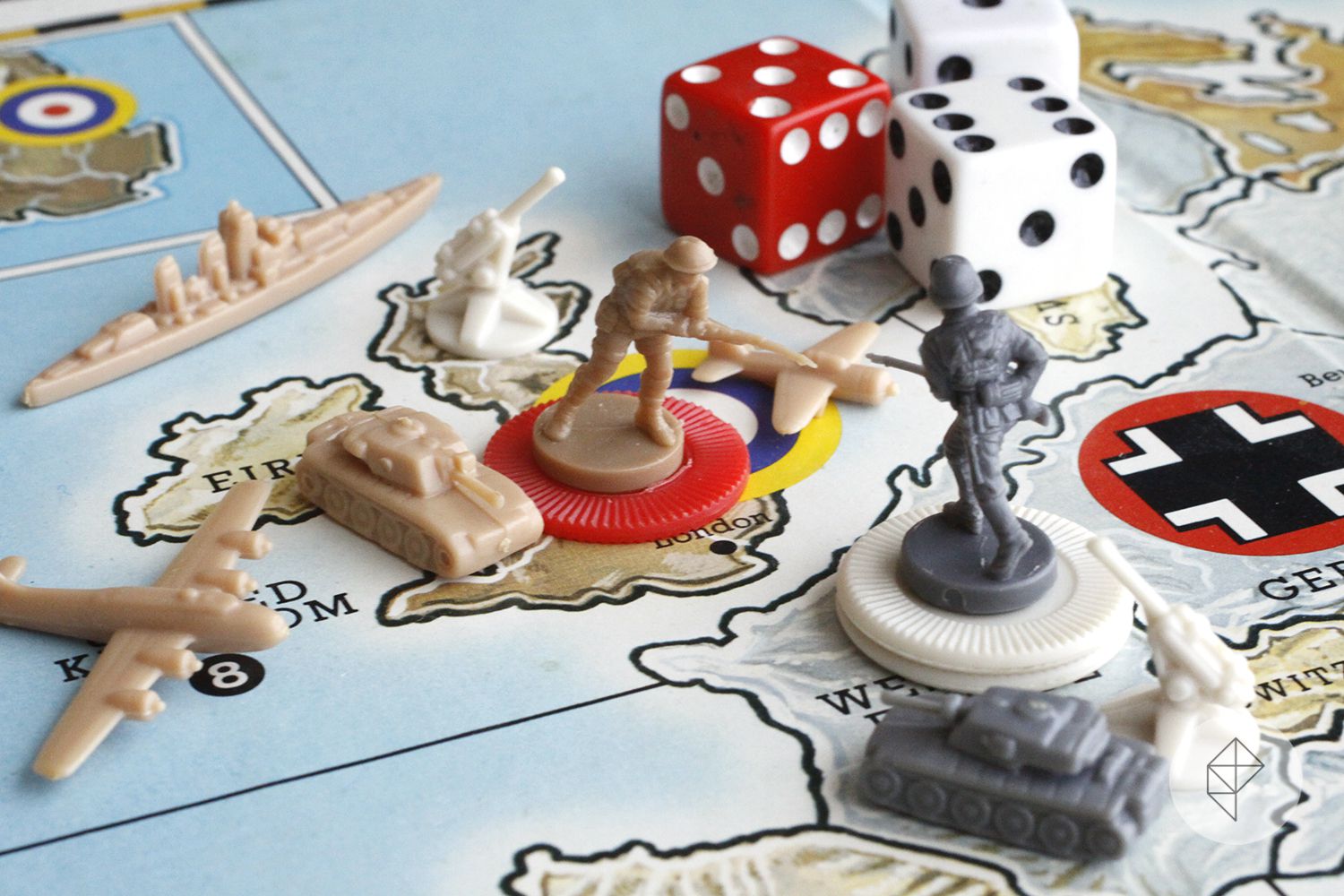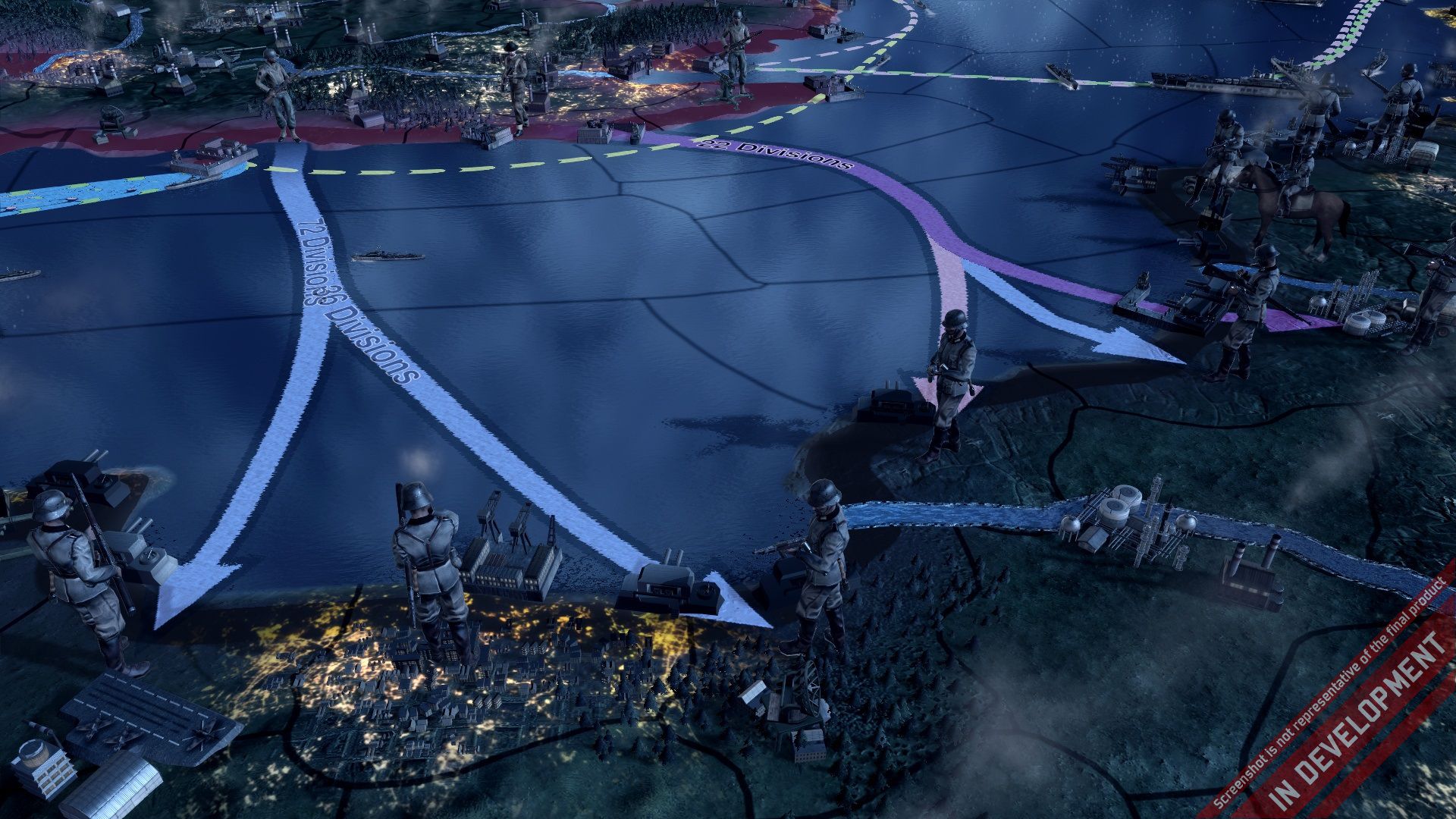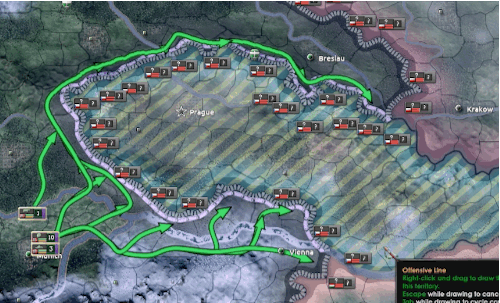Funny Hearts of Iron 4 Stories
Strategy games maker Paradox Interactive is on a roll, fueled these past few years by the success of two keystone franchises — Crusader Kings and Europa Universalis. Where most companies would use that momentum to break out of niche markets, instead Paradox just established new niches to dominate. They've also found success as a publisher, first with Magicka in 2011 and just this past year with Cities: Skylines and Pillars of Eternity.
Their reward has been a dedicated fanbase, willing to spend hundreds and sometimes thousands of hours playing their most complex games.
Now their in-house studio is planning for the re-launch of one of their oldest franchises, World War II grand strategy title Hearts of Iron 4, a game that executive vice president of game development Johan Andersson calls "the biggest grand strategy WWII game ever made."
Polygon sat down with Andersson, lead programmer on the original Hearts of Iron in 2002 and the designer of Hearts of Iron 3, to talk about his history with the franchise and what's taking so long to get it in the hands of fans around the world.
 Photo: Charlie Hall/Polygon
Photo: Charlie Hall/Polygon
Old generals never die
Andersson has always had a head for strategy games. It's what led him along the path to become a game designer. It's no surprise then that back in 1998, when he was applying for a job with the company that would eventually become Paradox Interactive, his final interview actually concluded with a board game.
"The producer at the time said, 'Okay, well the interview is finished. We're going to play some Axis & Allies here in the office. You want to stay?'" He was half-way through the game, planning for Britain's air assault and amphibious landings at Normandy, when that same producer turned to him and told him he'd gotten the job.
Now, 18 years later, he's helping put the finishing touches on one of the most ambitious WWII strategy games ever made.
"There's no other game, on the grand strategy level like this, that's been done," Andersson said. "There's been a few hardcore wargames, like [Gary Grigsby's] War in the Pacific and War in The West and so on, but they focus on specific theaters. They didn't cover the entire world."
What makes Hearts of Iron 4 so ambitious is that, like other Paradox titles before it, the game seeks to model not just the major powers that fought during WWII — nations like Germany, France and the Soviet Union — but medium and small nations as well.
"There's no other game, on the grand strategy level like this, that's been done."
"We let the Romanians play Romania," Andersson says, "and we let the people with Prussian heritage play Prussia. We have these weird countries that you've never heard about before the game starts, but then you realize that's where your grandmother's sister's cousin's roommate's friend is from."
When the game is completed, players will be able to begin a game in 1936 playing as just about any nation in the world and roll the clock forward from that point, all the way to 1948.
The potential to explore alternate histories, especially in the game's multiplayer mode, is enormous.
"I've seen a Berlin/Moscow Axis where everyone else fights against those two," Andersson said. "I've seen the United States join the Axis. I've seen Britain and Japan ally. There's all of this weird stuff that happens. And that makes the game — I'm not going to say unpredictable, but when a human starts doing it it's extremely challenging and extremely fun."

Commit the reserves
When the first trailer for the game came out in 2014, Paradox told fans to expect the game that following year. Now, nearly a full year after that anticipated 2015 release date Hearts of Iron 4 still isn't out. So what gives?
"I've been taking personal charge of and rescoping and changing the game," Andersson told Polygon. "I'm basically turning it into a high-quality Paradox title."
Andersson says, very straightforwardly, that the game simply wasn't up to Paradox's new standards. That's why he was brought in. The goal now, representatives tell Polygon, is to have the game out "later this year."
"Over the past few years my role's been changing," Andersson said. "I was leading all the internal development and leading all studios we had etcetera until early last spring. That's when I said no, I don't want to be an administrator.
"So these days my title says executive vice president, but I don't really have many people reporting to me. I'm kind of like a creative, but in charge of something. I have the lead designers reporting to me. I just do whatever I want to here at the company, making sure that the game turns out awesome."
"I've been taking personal charge of and rescoping and changing the game."
Andersson says the first order of business was to cut features that didn't work well, features that he says reminded him of "something we did six or seven years ago." In their place, Andersson says he's implemented what he's calling the "national focus system," a kind of technology tree that allows players to plot out a country's technological and political evolution over time.
"You can pick one national focus every 70 days," Andersson says, "There's quite a lot to choose from. The U.S., for example, they have five different ones that they could start with. You could do war bonds, which gives you powerful bonuses when you're at war with other major powers. It lets you build up your industry, gives you access to more research opportunities. Or you could choose war propaganda ... or the Manhattan project or ... the Monroe doctrine."
Creating these trees for every country has taken a long time. Along the way Andersson says a lot of work has gone into improving the user interface, taking the lessons learned in the development of Crusader Kings 2 and Europa Universalis 4 and making this next grand strategy title as straightforward as possible.
"Expect to see clear tool tips," Andersson said. "There's not as many clicks to do stuff. UI wise, I think people will recognize it and feel comfortable after a while."
Rally the troops
Another unique feature of Hearts of Iron 4 will be the way it rewards players for letting subordinate leaders — in effect under-the-hood scripts and algorithms — do their jobs. Players looking to micromanage the formation of every single division or battalion had best look elsewhere for their gaming fix.

"Basically, you take a bunch of raw units," Andersson says, referring to unassigned groups of tanks, infantry and artillery. "Then you assign them to a front line. You call them a command group, you give them a field marshall or a general. And then you can draw offensive front lines — where [the limit of their advance] should reach.
"Then you can assign sub-parts [to that advance], and assign those to have an attack angle arrow at a certain point, and another attack angle arrow at another point. And then those units will basically try to reach future front lines you have drawn."
The result is a game that abstracts the logistical grind common in other wargames. It turns the play experience into a kind of John Madden-style telestrator, a matter of drawing lines on a map and giving orders rather than tending to tedious stacks of chits on a game board.
"The interesting thing," Andersson says, "is that when you start your planning each unit will stand there until you click the go button, or they might get into defensive positions first and then wait. And every hour that is ticking by their planning bonus increases.

"Depending on which military doctrines you have in place you can plan quicker or you can reach a bigger bonus for having planned. So, if you're doing manual micromanagement you're not getting that planning bonus. But, if you're doing the proper planning, then you'll be able to have a big advantage when you execute that plan."
Of course, Andersson admits that no plan survives first contact with the enemy. That's why players will need to pay attention to battle groups as they advance — or fail to advance — and make adjustments as necessary.
Collateral damage
One way that Andersson can tell that the game is beginning to take on its final shape is that is when it begins to surprise him. It's not that suddenly the AI-controlled Nazi Germany decides to play nice with the U.S. No, it's when the systems and processes he and his team have worked on for months and years begin to coalesce in the background presenting him with new tactical challenges and reinforcing his decisions.
"I was playing as Japan and I was winning the war against China. I like rocket artillery; Katyushas specifically," Andersson said, referring to the vehicle-mounted, rocket-propelled indirect fire artillery pieces known for their shrieking sound and much feared among infantry along the Eastern Front.
"I like to have them in my motorized divisions. The problem is that they eat up a lot of supplies. Here I was sending them in on an attack into the Gobi desert and it created supply havoc. Basically, I lost the material equivalent of a dozen divisions there. Elsewhere in the Pacific, I had four marine divisions ready to land in Pearl Harbor and about 20 different Japanese divisions ready to land at various places in the Philippines."

But just as he turned his attention from the Gobi to the Pacific ocean, just as he was about to launch his amphibious campaign along multiple fronts, he lost naval supremacy. Without the steel and other resources that were lost in the desert he was unable to protect his carriers. His fleets had been crippled, his marines stranded aboard their landing craft unable to launch their assault without being torn to shreds.
The trick is building the game, and its underlying framework of interdependent systems, to support such complex interractions not merely for the big players like Japan and Russia but for little countries like Luxembourg as well.
"I think this is our advantage in being Swedish," Andersson said. "We've basically not been relevant major power in any conflict beside the Thirty Years War. What we think is fun is like we like to play our own country, and every one likes to play their own country, so for us we want to simulate the smaller and medium powers in every one of our games. And this is not something I think a US developer or a British developer or even a Russian developer thinks about. Who cares about the medium and small powers because they're not relevant."
By doing that kind of complex historical work Hearts of Iron 4, just like the other Paradox grand strategy games that have come before it, will have incredible replay value. For Andersson it's not merely a parochial exercise, but a way of laying bare the levers of history.
"It teaches people to learn that there are no isolated answers, that everything is connected. Production is connected to resources, to units. Battles are connected to logistics. Politics is connected to diplomacy, and diplomacy is connected to war.
"Everything is connected in life, that's probably the biggest thing that people can learn from the game."
Source: https://www.polygon.com/features/2016/1/25/10806780/hearts-of-iron-4-and-the-hard-work-of-history
0 Response to "Funny Hearts of Iron 4 Stories"
Post a Comment